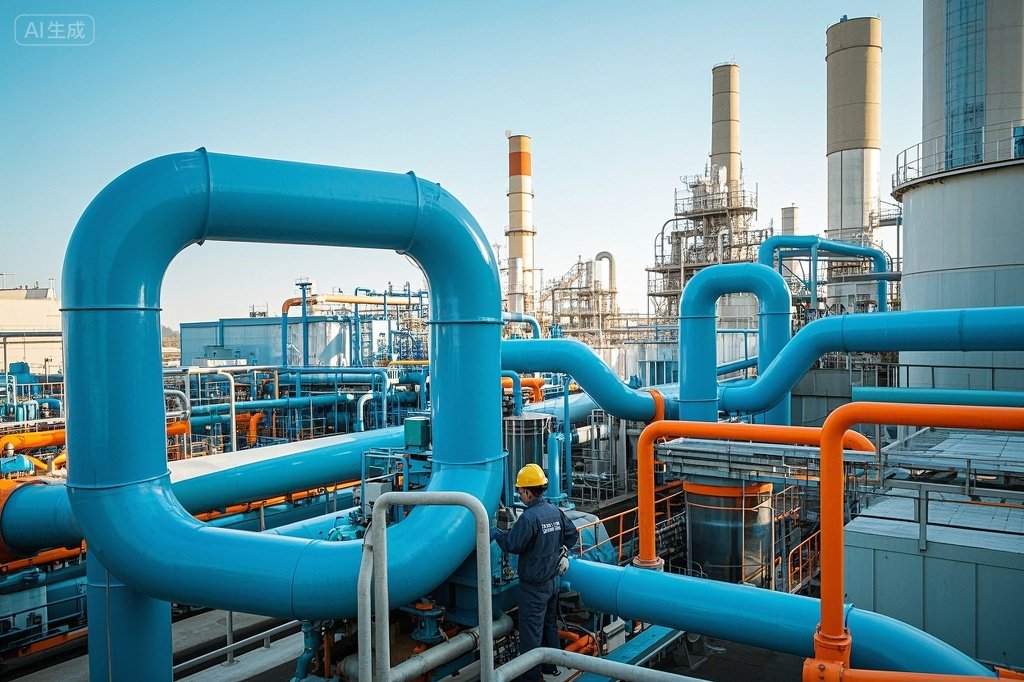Calcium hypochlorite is commonly used in water treatment and disinfection due to its powerful oxidative disinfectant properties. It effectively kills various microorganisms such as bacteria, viruses, and fungi, making it a versatile disinfection choice. Widely applied in drinking water treatment, industrial water systems, swimming pools, food production, and healthcare facilities, it ensures high safety with minimal impact on humans and the environment. With excellent stability and long-lasting disinfection performance, it is a cost-effective option in various applications. In summary, calcium hypochlorite is crucial in the disinfection product sector, recognized for its efficiency, broad spectrum, and safety, making it a preferred choice across industries.

Titanium for reactor, high resistance to acid, alkali, chlorine; long service life.
Reasonable structure, fast for removal of heat, accurate temperature control of chlorination, less side reaction, low material consumption.
Accurately control chlorine gas inlet speed and chlorine gas volume, effectively improve chlorine gas consumption.
Titanium for centrifuge, high resistance to acid, alkali, chlorine; long service life.
Good separation effect, low humidity ratio for separated solid, high production quality, low heat.
Totally enclosed structure, environmental-friendly.
Small occupation area.
Foreign trade company Calcium Hypochlorite Plant Solution achieves efficient recovery of salt and intelligent reuse of mother liquor through innovative process technology. It adopts an intermittent process to ensure uniform crystals, reduce energy consumption, and reduce the dosage of bleaching solution from 4.8 tons per ton of product to 2.5 tons, significantly Improve production efficiency while reducing chlorine conversion prices and raw material consumption.
| Consumption of Raw Materials | ||
| Raw Material | Unit | Guaranteed Value |
| Chlorine | T/T Ca(ClO)2 Product | ≤0.95 |
| Caustic Soda (100%) | T/T Ca(ClO)2 Product | ≤0.48 |
| Slaked Lime | T/T Ca(ClO)2 Product | ≤0.8 |
| Utilities consumption | ||
| Raw Material | Unit | Guaranteed Value |
| Electricity | kWh/T Ca(ClO)2 Product | ≤720 |
| Process water | T/T Ca(ClO)2 Product | ≤2.5 |
| Steam (For heater air) | kg/hr | ≤3500 |
| Cooling water (circulation) | T/T Ca(ClO)2 Product | ≤150 |
| Hot water | T/T Ca(ClO)2 Product | ≤50 |
| Instrument air | Nm3/hr | ≤60 |
| Chilled brine (-15°C~-7°C) | T/T Ca(ClO)2 Product | ≤100 |
| Cold cooling water (7°C~12°C) | T/T Ca(ClO)2 Product | ≤100 |
| Cooling water (32°C~42°C) | T/T Ca(ClO)2 Product | ≤100 |
The advantage of Foreign trade company Calcium Hypochlorite Plant technology is that through the recovery of salt and mother liquor, it uses an intermittent process to form uniform crystals, reduces energy consumption, and effectively reduces the amount of bleaching liquid, thereby reducing the price of chlorine conversion and the consumption of raw materials.
32% NaOH and mother liquor are pumped into a reaction kettle according to a certain proportion, chlorine gas is introduced for reaction, and the temperature in the reaction kettle is controlled by cooling water at 12°C, so that the reaction kettle is in the form of NaCl crystals, and finally the NaCl crystals are separated by centrifugal separation. It can be mixed and dissolved with industrial salt in caustic soda plant and used in caustic soda plant.
Using intermittent process. During crystallization, the crystal particle size is more uniform than the continuous process, which is conducive to centrifugal separation and drying, also the energy consumption is low.
the Ca(ClO)2 and NaCl crystals are in equilibrium, and the concentration in the mother liquor is basically at a stable range. The NaCl concentration is ~20% and the Ca(ClO)2 concentration is 6~10%. The amount of bleaching liquid is about 4.8 tons/ton product, and it is difficult to handle such a large amount if directly sold. The effective chlorine conversion price is also relatively low and consumes a lot of raw materials. Using mother liquor reusing technology, the bleaching liquid will be reduced from 4.8 tons/ton product to 2.5 tons/ton product.
Designed for a 20-year equipment lifespan, with key equipment constructed from titanium, including the reactor and centrifuge.
Ensures low fuel and electricity consumption, enhancing operational efficiency.
Utilizes a Smart Distributed Control System for automatic operating optimization, enhancing overall plant performance.
Implements a comprehensive safety system with gas leakage detectors strategically placed throughout the plant area. These detectors are interlocked with alarm and shutdown systems to ensure a safe operating environment.
Adheres to strict Quality Control Protocols (QCP) covering all stages of project execution. Additionally, provides Health, Safety, and Environment (HSE) training and management for Owner's staff.
Offers all-inclusive after-sales services and remote technical support to ensure ongoing operational efficiency and maintenance.

This article explains the core processes in a chlor‑alkali facility—how brine is prepared and purified, followed by electrolysis to produce

This article explains the core processes in a chlor‑alkali facility—how brine is prepared and purified, followed by electrolysis to produce

This article explains the core processes in a chlor‑alkali facility—how brine is prepared and purified, followed by electrolysis to produce

This article explains the core processes in a chlor‑alkali facility—how brine is prepared and purified, followed by electrolysis to produce

